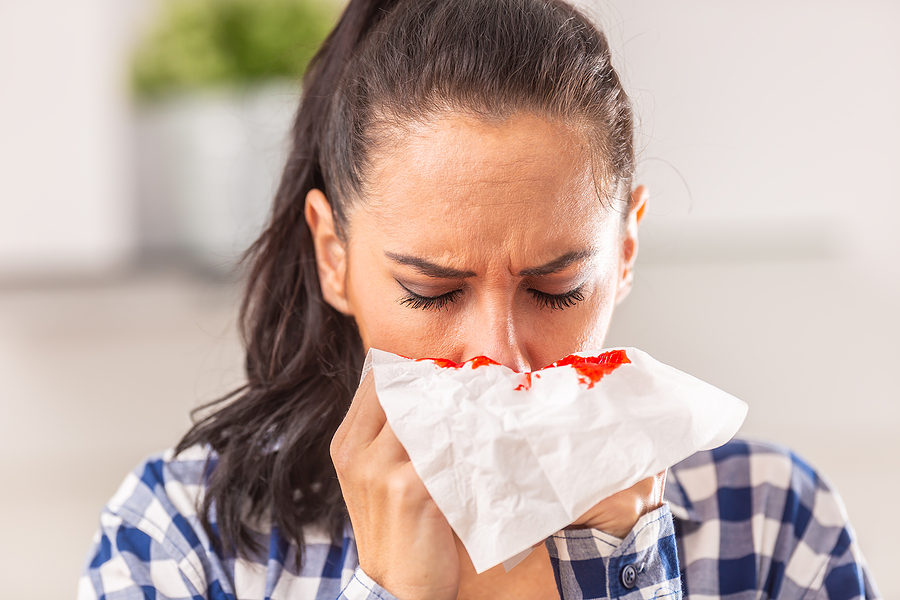(770) 410-0202
Understanding Nosebleeds

Nosebleeds can seem alarming, but they are common and usually harmless. It’s essential to understand what causes them, how they can be treated, and when to seek medical attention.
A nosebleed, medically known as epistaxis, occurs when blood vessels inside the nose rupture and bleed. The nose contains many tiny blood vessels that lie close to the surface, making them susceptible to injury. Nosebleeds can happen in the front of the nose, which is usually not serious, or the back of the nose, which can be more severe.
Common Causes of Nosebleeds
Dry air is one of the leading reasons for nosebleeds. When the air is dry, it can dry out the nasal membranes, leading to cracks and bleeding. This is often seen during the winter when indoor heating systems are used.
Allergies and infections can lead to nasal congestion and inflammation, making the nasal membranes more fragile and likely to bleed.
Any direct injury to the nose, such as from a fall or a blow, can cause the blood vessels to rupture. Even minor injuries can result in a nosebleed. Frequent nose picking or blowing can also irritate the delicate tissues inside the nose, causing them to bleed.
Certain medications, especially blood thinners like aspirin or anticoagulants, can increase the likelihood of nosebleeds. Additionally, nasal sprays and allergy medications might dry out or irritate the nasal lining.
Less Common Causes
While high blood pressure alone might not cause nosebleeds, it can prolong bleeding once it starts. This is because the tension in the blood vessels is higher. Conditions that affect blood clotting, such as hemophilia or leukemia, can lead to frequent or prolonged nosebleeds. Though rare, tumors or abnormal nasal cavity growth can also cause nosebleeds. These require medical evaluation and treatment.
Treatment for Nosebleeds
Most nosebleeds can be handled with simple first-aid measures. Pinch the soft part of the nose, keep the head slightly forward, and apply pressure for about 10-15 minutes. Using a tissue or cloth to catch the blood can help maintain cleanliness.
Applying a cold compress to the bridge of the nose can also constrict blood vessels and reduce bleeding. Ensure the compress is not too cold to avoid skin damage.
Tilting the head back is commonly suggested but can cause blood to flow down the throat, possibly leading to choking or vomiting. Keeping the head forward ensures that the blood exits through the nose.
Preventing Nosebleeds
Humidifiers add moisture to the air, preventing the nasal membranes from drying out. This is especially useful in arid climates or during the winter.
Drinking plenty of water keeps the body, including nasal tissues, well-hydrated. This helps maintain the moisture balance in the nasal passages.
Avoiding irritants such as cigarette smoke, pollution, and strong odors can also help maintain healthy nasal tissues.
Using nasal sprays as directed can alleviate symptoms without causing additional irritation if prone to allergies. It’s also advised to refrain from excessive nose-blowing.
When to Seek Medical Attention
While most nosebleeds are not serious, there are times when medical intervention is needed. If a nosebleed lasts longer than 20 minutes despite applying first aid or if it results from a serious injury, seeking medical help is essential. Frequent nosebleeds, recurring without a clear cause, or those accompanied by other symptoms like bruising or bleeding elsewhere also warrant further investigation. Contact us today to learn more!


